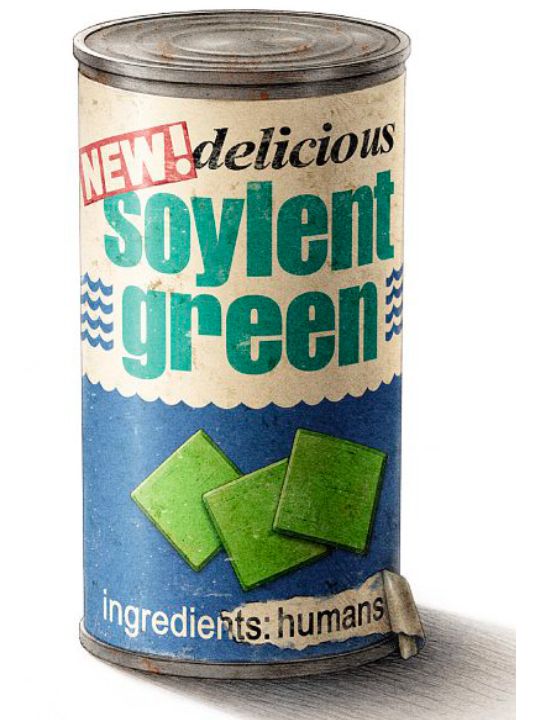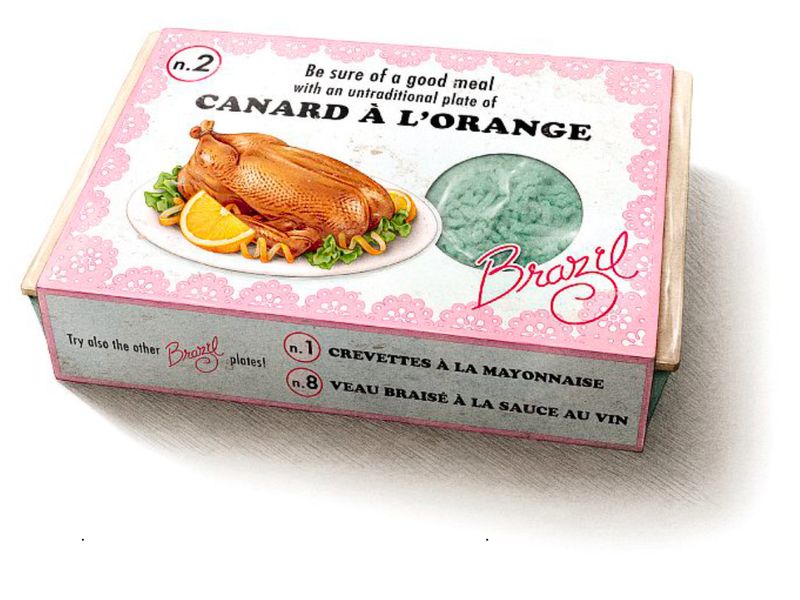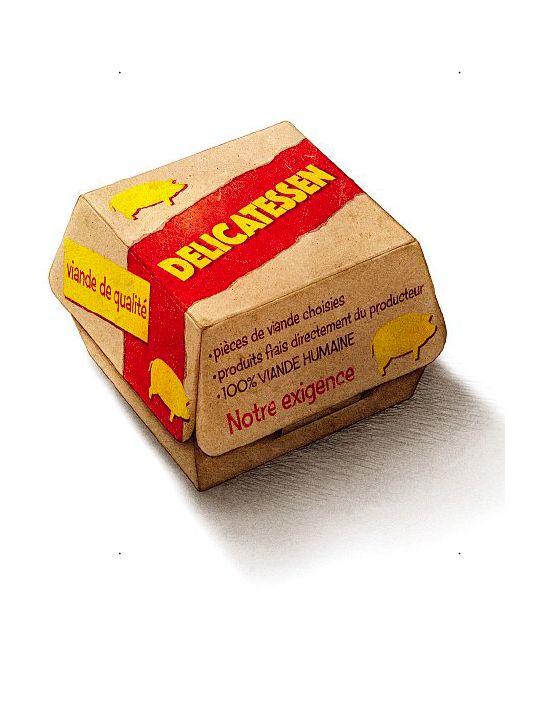
Insane flavour
Let ’s begin with a film from the days before this retro-futurist wave, but which gave us food nostalgia served up on a silver platter. Soylent Green, a film directed by Richard Fleischer in 1973, describes a world ravaged by pollution and global warming and dominated by the multinational Soylent corporation that makes pink, blue or green (the best) crackers, supposedly manufactured with plank-ton to feed an overpopulated world. In this prophetic film – it takes place in 2022 (only five years away!) – Charlton Heston plays a New York policeman who discovers, while working his final investigation, that the raw material for these delicious crackers is none other than the flesh of people who have agreed to be euthanised in exchange for watching a 3D cinematic spectacular of what life on earth looked like before their blessed era.

Tubular chicken
Director Claude Zidi didn’t take things quite so far in his 1976 comedy. In that film, Louis de Funès embodies a food critic, Charles Duchemin, of the famous Guide Duchemin, who one day learns that Tricatel, French fast food king, wants to rule the world… of restaurants. In Zidi’s film, Tricatel stands for industrialist Jacques Borel, inventor of France’s Wimpy restaurant and the rest stop who was one of the apostles of the 1970s junk food revolution à la française. In the film L’Aile ou la cuisse, his factory, which Duchemin and his son (played by Coluche) infiltrate, manufactures chicken in a kind of toothpaste form and wrapped in papier-mâché skin, as well as salad with plastic crêpes. The denunciation stops there, but the fact that Tricatel intends to get rid of Duchemin and his son in one of the tin cans he manufactures leaves the viewer to speculate (especially after Soylent Green).

Fast forward ten years: in his 1985 cult classic, Brazil, director Terry Gilliam gives us the first film to use a steampunk aesthetic, with a blend of science fiction and strict social codes from the Victorian era. In this totalitarian society, love is prohibited. The hero, an employee of the Ministry of Information, caught between his romantic dreams and conflict with the bureaucratic machine, ends up rebelling against the powers that be and fleeing to a dreamlike universe. During one scene, while having lunch with his mother in a chic restaurant, we are given a glimpse of where gastronomy fits into this world reminiscent of 1984. The head waiter, French of course, asks diners to choose a number and then returns with dishes whose labels carry the name and photo of the corresponding recipe: ‘veal braised in rich sauce’, ‘duck à l’orange’, ‘shrimp with mayonnaise’. But the only thing on the plate is a pale, gelatinous gruel, a cruel joke about which no one seems the wiser. They are no more aware than when an exploding bomb shakes the restaurant a few seconds later, leaving survivors oblivious to the sudden appearance of a folding screen which comes between the dinner table and the crime scene. In this world of appearances, that’s reality, regardless of whether it be food or politics.

Savage steak tartare
Delicatessen, the opus of Marc Caro and Jean-Pierre Jeunet from 1991, plunges the viewer into an alternate universe, a French version of steam-punk where the period of German occupation replaces the Victorian era as cultural reference, with its black market and fashion of stacked heels and purple hair worn with fascinators. The two directors go into even darker territory, by making the butcher shop owned by Jean-Claude Dreyfus a den of cannibalistic activity. The tenants who mysteriously disappear end up in the meat grinder, ensuring a constant and welcome supply of mince. Four years later, in The City of Lost Children, Jeunet and Caro set the scene for a world now oscillating between the universe of Dickens and that of Jules Verne (without forgetting the stamp of Jean-Paul Gaultier), where misery and brutality preside over human relationships. In this society where no one respects anything at all, not even the dreams of children, gluttony is the only path to fulfilment. Witness for example a small boy who plunges an enormous dried sausage into a jam pot and devours it with great relish. Such bad taste is even worse than cannibalism, Louis de Funès’ character Duchemin would have said had he witnessed this scene, but at least it’s completely in keeping with the temporal shifts at work in the futuristic landscape.


